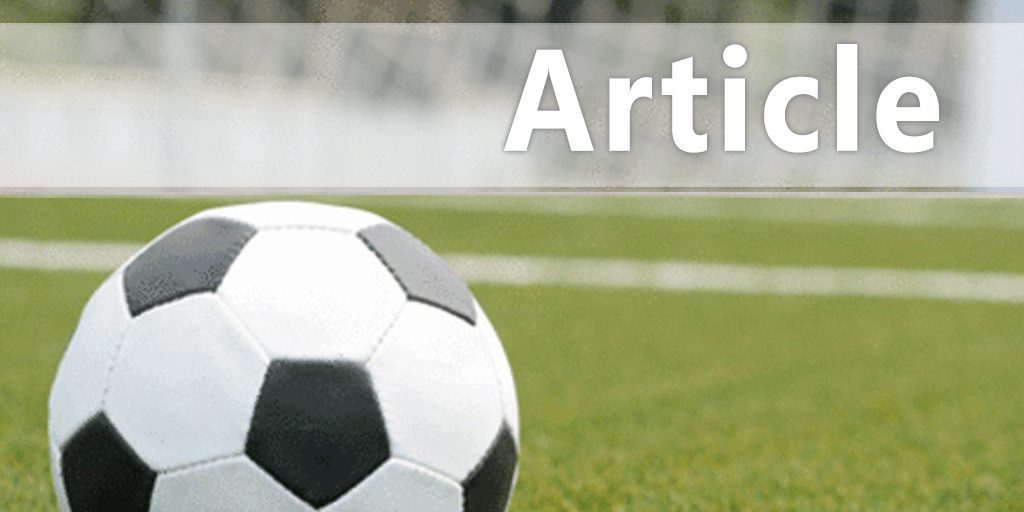|
4 Soccer Agility Drills to Improve Quickness and Dribbling By: James Darley Provided by: STACK
This is problematic because soccer is not an endurance sport, and agility ladder drills do not translate well to in-game situations. As noted by Dave Tenney, the Sports Science and Performance Manager for the Seattle Sounders, and Mladen Jovanovic, a soccer physiologist, soccer is an alactic-aerobic sport. Without getting into esoteric details about energy systems, this means that soccer requires a combination of short high-intensity efforts, such as sprints, which use the alactic-anaerobic energy system, and long periods of running or jogging at lower intensity levels, which primarily use the aerobic system. In simplest terms, low to moderate exercise that does not make you feel out of breath is aerobic,"with oxygen," and higher intensity exercise that leaves you out of breath is anaerobic, "without oxygen." What is Agility? To understand why agility ladder drills do not improve dribbling skills or in-game speed, we must first define agility. Many strength coaches and sport scientists accept the definition proposed by Sheppard and Young in their 2006 literature review. They define agility as "a rapid whole-body movement with change of velocity or direction in response to a stimulus." The difference between this and other definitions is that agility is not pre-planned and coordinated. On the contrary, changes of direction happen in response to outside stimuli. The problem with agility ladder drills is that all of the movements are pre-planned. There is no outside stimulus in the form of an opposing player or random movements. Agility ladder drills simply make you better at agility ladder drills. This is not to say that the agility ladder is a worthless piece of equipment. In fact, agility ladder drills are an excellent way to improve coordination and body awareness for younger players, or as a dynamic warm-up tool for older players. The point is they are simply a poor way to improve in-game speed, agility, and dribbling ability—all of which are important for soccer players, who need to quickly react to game situations, change direction, and be able to control the ball to dominate possession and create scoring opportunities. So, if agility ladder drills do not improve agility, what kinds of drills do? The best ones are those that force players to react to an outside stimulus, including tag games and live soccer drills. 4 Agility Drills to Improve Your Game Speed and Dribbling
1. Partner Ball Tag This is an excellent drill to improve agility. Nine players must scan the 20-by-20-yard grid to look for taggers and the soccer ball. They must react to the movements of the taggers to avoid getting tagged and eliminated. Besides improving agility, it is a fun drill that elicits many laughs. • Create a 20-by-20-yard grid using cones or markers. 2. The Driving Test This is a great drill to improve agility and ball control. The players are forced to react to commands from a coach. The players need to accelerate, decelerate and change direction at a moment's notice, similar to game situations that require quick changes with the soccer ball that are not pre-planned. • Create a 20-by-20-yard grid using cones or markers. 3. 1 vs. 1 Attacker vs. Defender + Shooting on Goal The purpose of this drill is to make each player react to the other players' movements. The defender scans the ball and the attacker's movements to try to steal the ball. The attacking player analyzes the defender's positioning and uses his dribbling skills to get a shot on goal. The drill improves agility for both defender and attacker. • Start the drill just past midfield. 4. Modified 4-Cone Drill In the traditional 4-Cone Drill, the players perform pre-planned movements, then one-touch the ball back to the coach. In this modified version, players react to commands given by the coach, then one-touch the ball back to the coach. Again, the drill works on the cognitive functions necessary to develop agility. • Create a 5-by-5-yard grid using cones or markers. These methods might be controversial, but they help develop a soccer player's agility, understanding of the game, and ball control. This does not mean that other areas (such as linear speed, relative strength and maximal strength) should be neglected. They are all important components to develop a complete soccer player and improve agility. Plyometric drills and strength training should be used in conjunction with the drills listed above. The purpose of this article is not to denigrate agility drills used by many soccer preparation coaches, but to stimulate discussion about agility training in soccer based on the research and evidence. Rather than reinforce the agility ladder myth, the goal should be to design agility drills that will benefit all soccer players in the United States.
|







